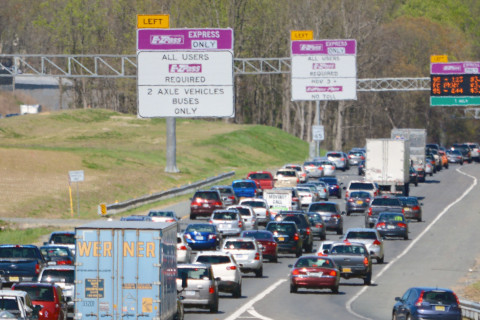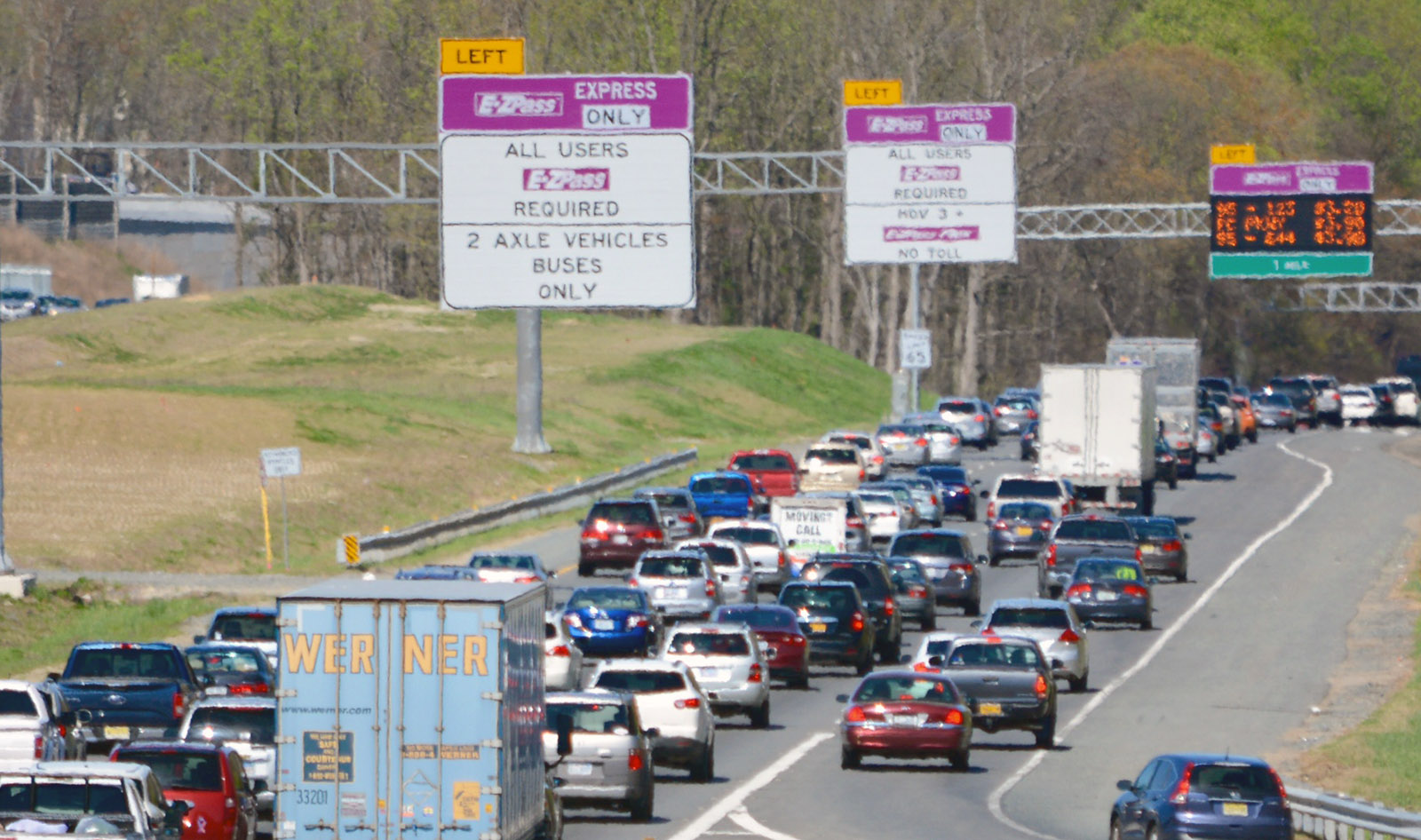WASHINGTON — A big extension of the 95 Express Lanes and more concrete plans for new train tracks were among the biggest new announcements this week after Virginia was awarded a $165 million federal grant to help address congestion for commuters, travelers and freight along the Interstate 95 corridor.
“This is the most congested corridor in the entire Southeast of the United States of America. It has more congestion than Atlanta, than in Miami, and it has gone on for years and years,” Virginia Gov. Terry McAuliffe said Friday. “Today, the congestion is going to end.”
While the promise of an end to congestion may be a bit of hyperbole, the announced plans combined with changes that were already in the works will offer new options in the corridor.
The new 95 Express Lanes extension will eventually push the lanes or direct connections down near Route 3 in Fredericksburg, Virginia.
“When you go south [ …] you get to that funnel and [ …] you’ve been moving along, and then boom, you’re stuck,” McAuliffe said. “Now, all those commuters who may come up here will now — all the way through Fredericksburg — be able to get on these express lanes,” McAuliffe said.
The extended lanes will also be operated by Transurban, McAuliffe said. The company will put up some of its own money, then collect the toll revenue.
“We do it in a way that works for them and works for us, and I’m fine with it,” McAuliffe said. “I’m getting 17 miles of new express lane capacity, and people who choose the express lanes, guess what? They’re not in the free lanes, so it frees up capacity for other folks.”
Virginia had already agreed to a deal with Transurban, the private operator of the Express Lanes, to extend the lanes north along Interstate 395 to the Pentagon. With this change, lanes that are HOV-only at rush hour and open at other times will become tolled 24/7, with free rides for motorcycles or cars with three or more people inside. The free rides for cars require an E-ZPass Flex.
The other major project the grant will jump-start is the construction of an additional track along 14 miles of CSX railroad that VRE and Amtrak trains currently use, the McAuliffe administration said. The additional track and public spending on the private railroad will eventually allow more passenger trains to use the corridor.
“It has been a choke point for many years,” McAuliffe said. “We are finally solving the biggest choke point on the entire Eastern Seaboard.”
The District has been studying the replacement of the effective choke point: the bridge near Reagan National Airport. The Long Bridge Study, which the Department of Transportation is doing in partnership with the Federal Railroad Administration, is intended to identify long-term changes that could expand the connection between D.C. and Virginia beyond today’s two-track bridge that dates back to the late 1800s.
A decision and the approval of a preferred plan to widen the bridge or to build a new one is expected in 2018. Actual construction or other changes would begin sometime after that.
The bridge project would need to connect to the additional tracks Virginia has been planning to construct for a long time.
“Now we have the money to do it,” McAuliffe said.
In the long term, a study is looking into higher-speed rail connecting D.C. to parts of the Southeast. Virginia will get ownership of a key stretch of abandoned railway in the southern part of the state that could be used for the project, and the state is planning to add additional Amtrak service to places like Roanoke, Virginia.
“With the 14 miles of track, passenger and freight can simultaneously use this corridor. That is probably the biggest announcement I’ve made here,” said McAuliffe. “Now, guess what? I promise you this: You get on at the time you’re supposed to, [and] you will get off at the time you’re supposed to.”






